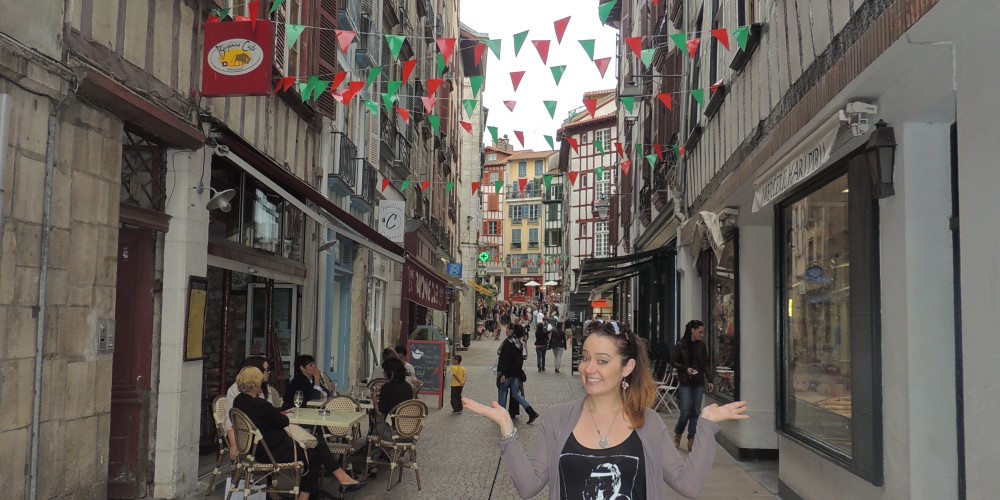Leaving St Emilion was bittersweet. On the upside, we had tasted (and purchased) an extensive selection of Bordeaux wines; on the downside, we didn’t have enough time to really see the medieval town, explore its underground caverns or venture on a cycling tour of the nearby wineries. But, you live and learn, and the experience of regret as we were leaving certainly solidified my strong preference to never spend just one night somewhere – it is just too much of a tease!
After our night in St Emilion, we packed our trusty Renault with our suitcases, bid farewell to our wine shop friend, and left the rolling hills of wine country behind us as we set off on the open road once more.
Our first destination, Bayonne, was planned as a pitstop on the way to the coastal town of Biarritz where we had planned three nights in an AirBnB apartment.
Recommended as a bustling city with a beautiful medieval town centre, Bayonne also boasts a rich history, delectable chocolates and friendly residents. After our early morning departure, we arrived in Bayonne just before lunch and parked in a large public carpark near the river and set about exploring!
Lucky for us, one of the first things we came across was a tourist bureau, so we nabbed a walking tour map, filled up our drink bottles and began our whistlestop walking tour through the old town, which was only a five minute walk from the carpark.

Interestingly, Bayonne was originally settled as a Roman military camp called Lapurdum, and the ancient city wall is still visible now. As long as they have lasted, the walls unfortunately couldn’t stop Barbarian invaders from conquering the Roman Camp. It was not until the 10th century that the town’s name was definitely adopted to Baïona (meaning ‘good river’ as it sits on the banks of two key rivers) and the town’s trading activities via the port become more important.
Now, you know how I feel about history and one of my favourite historical characters is Eleanor, Duchess of Aquitaine, who married King Charles of France before having that wedding annulled, and then married Henry Plantagenet, King of England. When Eleanor married King Henry in 1152, the town of Bayonne suddenly become a major commercial base between France and England. The masterpieces of religious art and architecture (the Cathedral Sainte-Marie a perfect example) abounded, mostly inspired by the Gothic style of the North whilst the Cathedral seems influenced by the Champagne region.

We were not really too sure what we were looking for in Bayonne, so decided to just stroll around and enjoy the beautiful architecture and the hustle and bustle of the vibrant old town. The tall buildings with different coloured wooden painted frames and window coverings were so picturesque; it felt like we were walking through a film set most of the time. Photos don’t really do the town justice!

The maze of alleys and narrow streets were everywhere you looked, and with a boutique watchmaker on one side and luxury designer store on the other; we could understand why Bayonne is so renowned for its shopping!
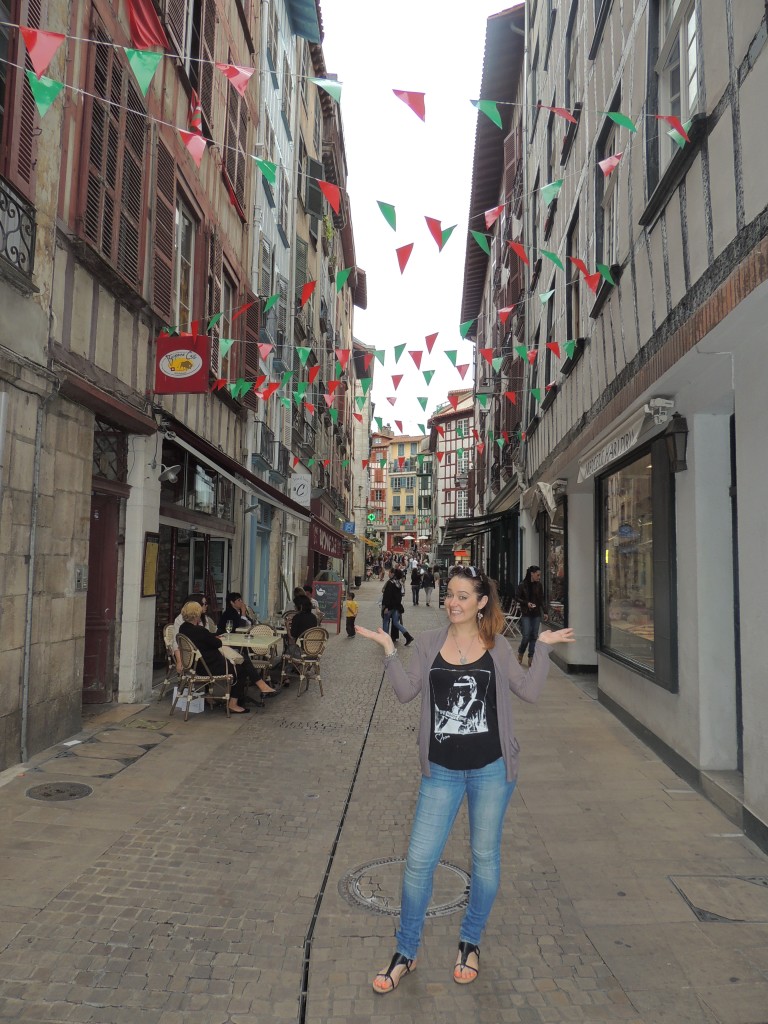
The other thing Bayonne was renowned for, and has a long history in, is… chocolate! Oh yes, my type of town! The origins of chocolate-making in Bayonne go back to the beginning of the 17th century, when Jews fleeing from the Inquisition, settled in the Saint Esprit district on the right bank of the Adour river.
They bought with them little known chocolate making techniques and quickly established themselves as experts chocolate makers, known far and wide. Today, seven expert chocolate-makers are still to be found in the town. Still members of their own guild, they use secret recipes over 200 years old as they hone their skills and knowledge whilst brining the most delectable chocolate to the town! So, after waltzing about town for awhile, we thought we better experience some of this local treasure and stopped at a chocolatier for a coffee and some tasty chocolate morsels…. Mmmmmmm!

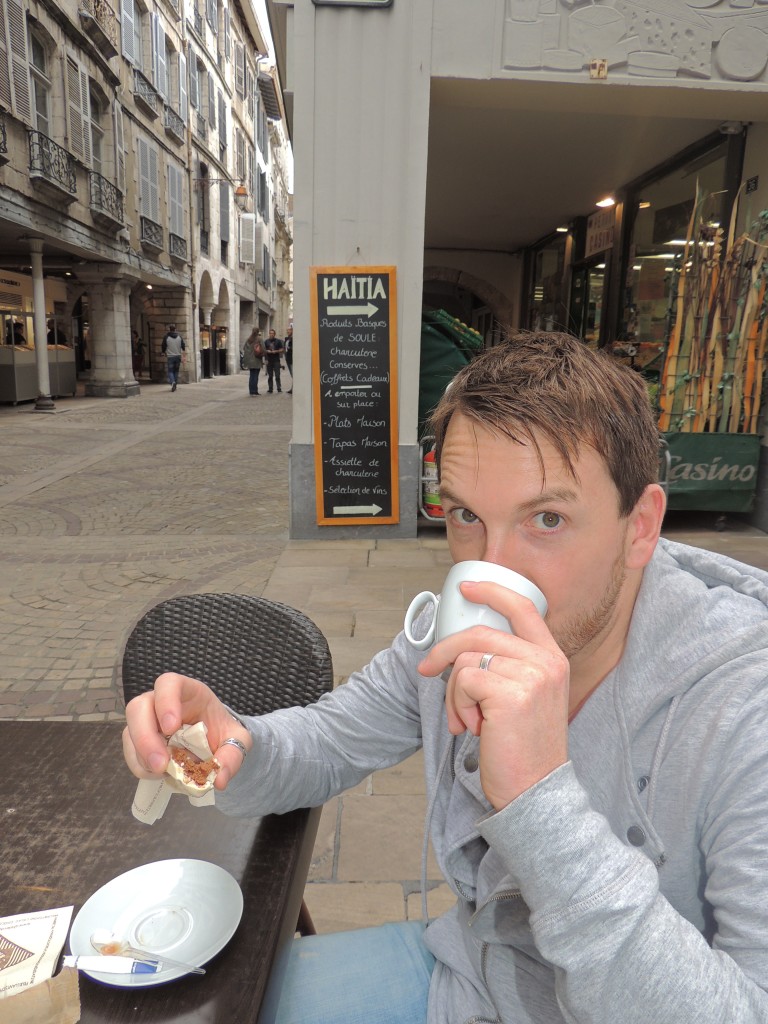
After indulging in all the choccies, we continued to stroll through the alleys and laneways and eventually came across the river with a bridge that overlooked the riverbank. Looking back towards the old town we were blown away by the beauty of the old townhouses bordering the river. Love them!

By now the day was racing along, and as Dave was keen to swing into world famous surf hotspot, Hossegor, we had to cut time short in Bayonne, and head off. Overall, Bayonne was pretty but more of a bustling city than a town, and I am not sure I would have wanted to stay longer there, and give up somewhere else.
Hossegor
So. Next stop, Hossegor! This is one spot that Dave was really keen to visit and make a detour to, and it worked well to do it as a detour on our way to Biarritz as both are located on the coast about 20km apart. Renowned for its ‘world’s best’ rating for surfing, Hossegor is also home to major international surfing competition the Quiksilver Pro France every year in September. We missed it by a matter of days, which I know Dave was disappointed about, but I think being there and seeing the beautiful beach almost made up for it…. Almost.
Despite its reputation for some serious waves, the water was pretty calm whilst we were there and Dave decided that it would not be worth hiring a board to just sit in the calm sea. He did get a couple of snaps in front of the beach though, just to prove we went 😉
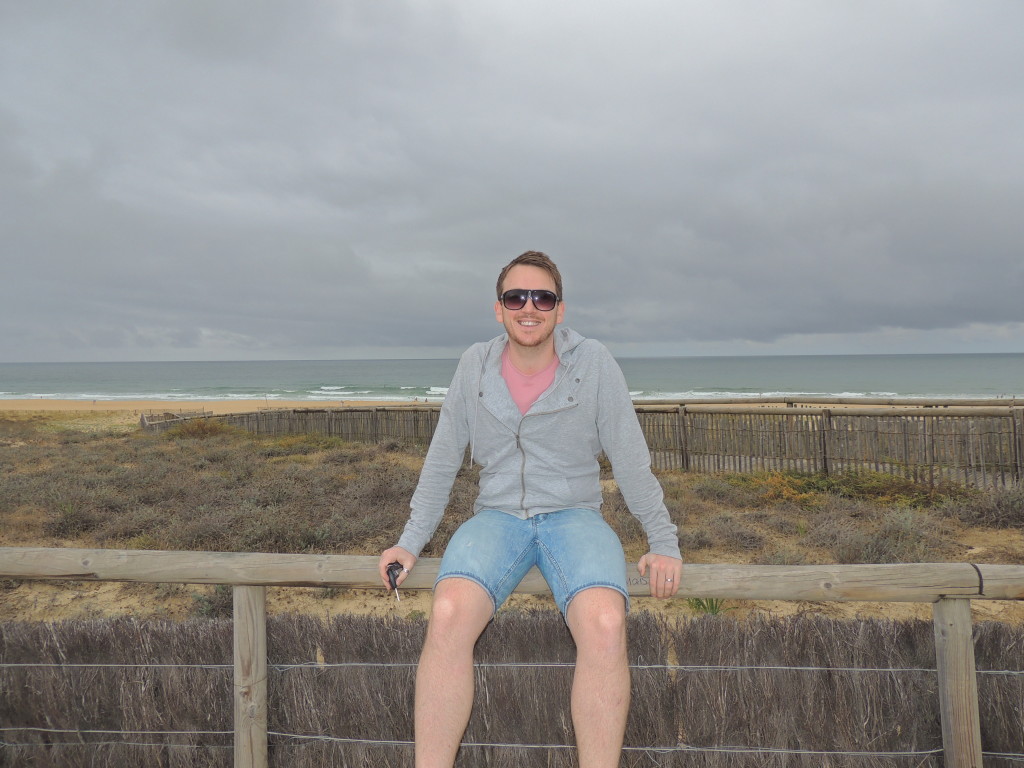
We instead decided to have a late lunch at the popular La Tetrade Restaurant, overlooking the water. Never ones to shy away from a three course meal at lunchtime, we ordered the daily special set menu at the waiter’s recommendation, ordered a vino and reflected on our busy first few weeks in France. 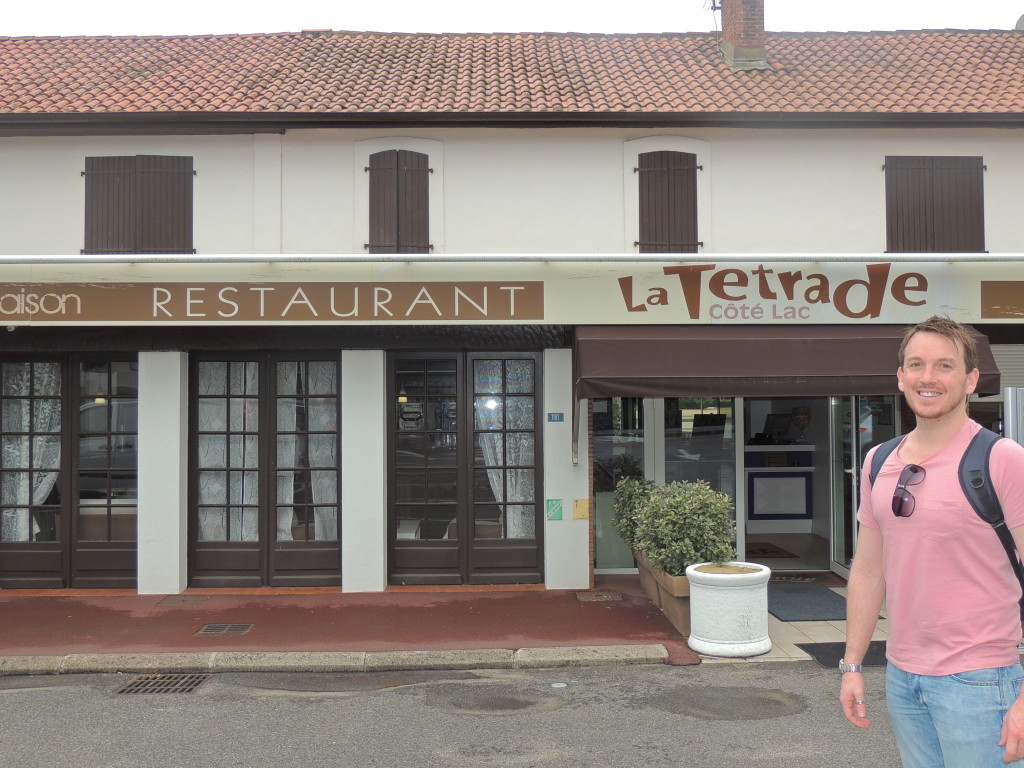
Before too long, we were bought our delicious first course – yummy French clams in a white wine sauce, shortly followed by a delicious local fish dish with pan-fried vegies, then a dessert which I can not remember but think it involved a pudding! Regardless, by the time we finished, we were nicely relaxed and ready to stay in the coastal surf vibe that this whole region is renowned for, so back to the car and on to Biarrittz!
